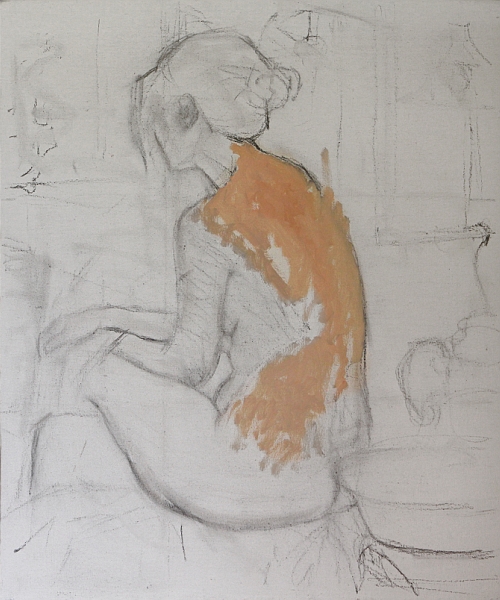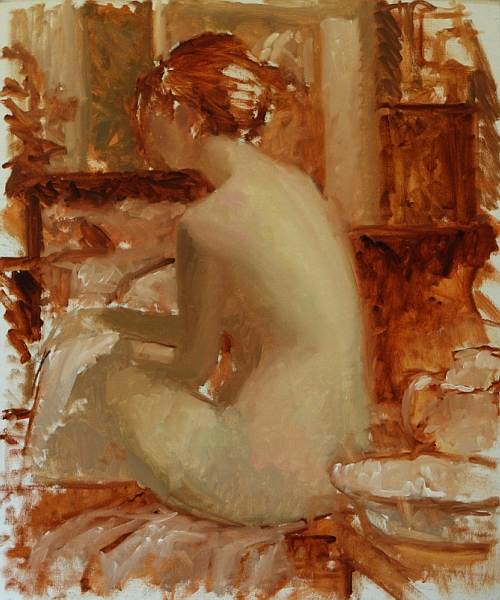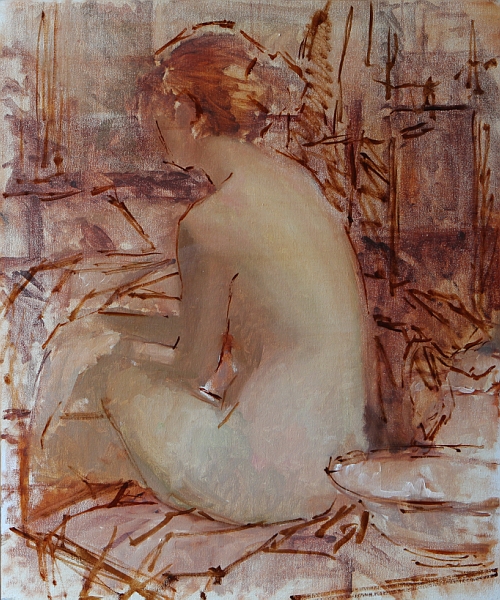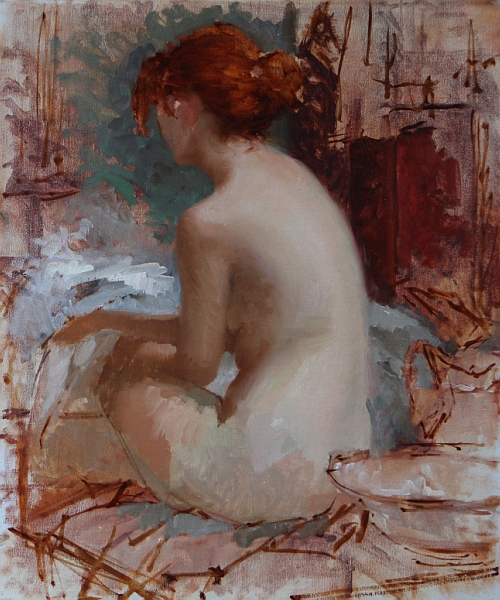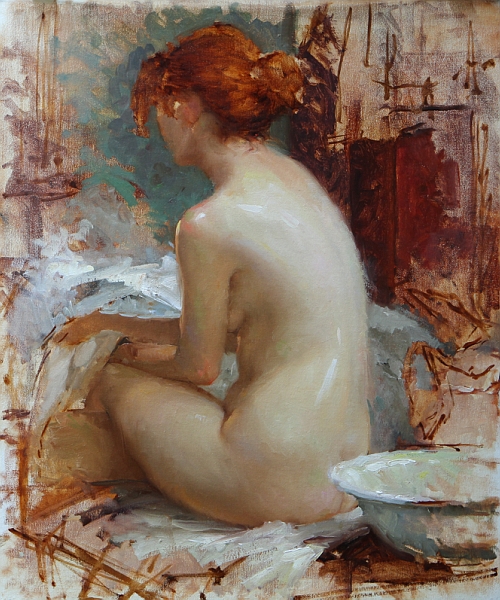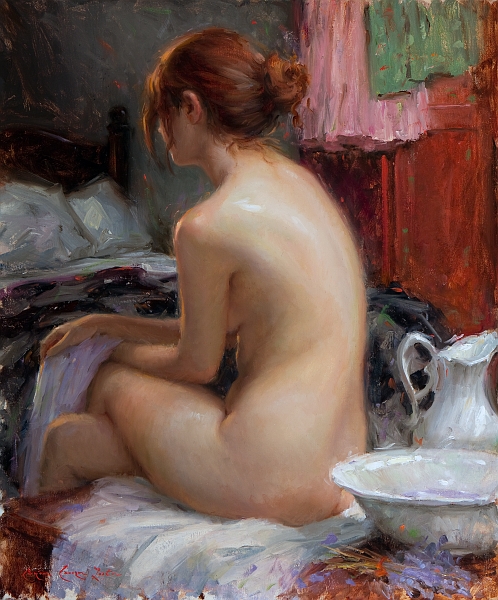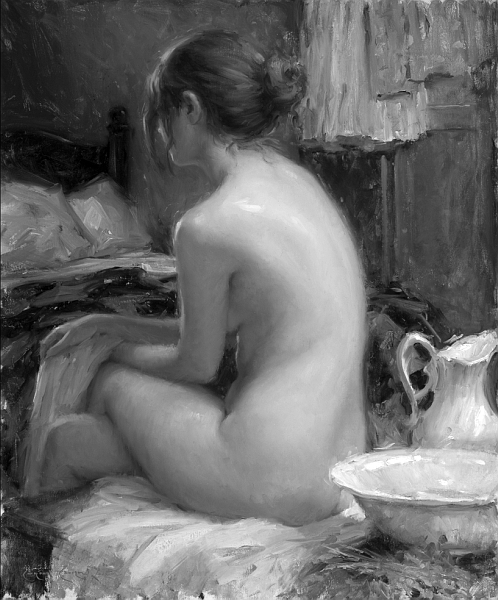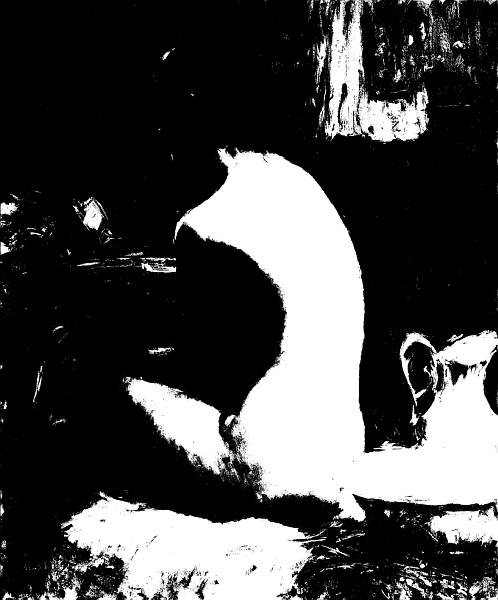Perceptions
on
Color relevancy and the limited palette
2 hour study from life--Limited palette.
Colors used:
Titanium white -Utrecht
Yellow ochre - Rembrandt
ced red medium - Rembrandt
Ivory black - Gamblin
I find December a great time to step back and rethink a few things. The first order of business was to scrape down my palette. I wanted to reset my thinking on color. So I decided to give the "Zorn" colors a try again. I have worked with this set of colors at different times over the past ten years. So I was excited to give 'em a try again.
When you have the model in front of you and the clock is ticking, there's a lot going through your mind. One of your comfort zones is to grab for your "typical colors" the ones you're use to and start mixing. But what happens when they're not there...and the clock is ticking! You have to rethink everything and fast!
But just relax and remember, values are king, so dont throw the baby out with the bath water here. And just keep thinking and observing warm and cool...and of course don't forget to squint. Simple right? It's simpler than you think and exciting. Don't think about trying to get "that" color you see. Instead ask yourself
what temperature and value is that color relative to everything around
it, and mix according to that rule. You'll be surprised by what you can
do with so little. I'll stick with this limited palette for a while, I really enjoyed it.
So next time you paint, give it a try and let me know how it goes.
So next time you paint, give it a try and let me know how it goes.
Final thought--it's all
about relevancy.
"Only when he no longer knows what he is doing does the painter do good things." --Edgar Degas










